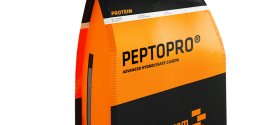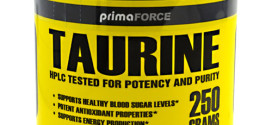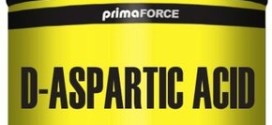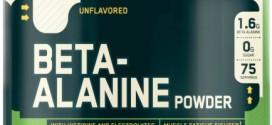Supplement Ingredient Guide: Glucosamine
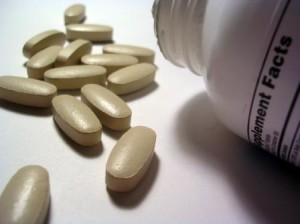
What is it?
Glucosamine is an amino sugar and a prominent precursor in the biochemical synthesis of glycosylated proteins and lipids. It occurs naturally within the shells of shellfish, animal bones, bone marrow and fungi.
Indications
It is indicated for those looking to support the structure and function of joints. So anyone whom undergoes regular exercise or those with osteoarthritis. It can also be used as a preventative method to avoid joint pain.
How much should I take?
If you are trying to prevent injury then you should aim for 400-800mg of glucosamine per day, however, for improved speed of recovery, aim to take 1200-1600mg of glucosamine per day.
Research
Evidence surrounding glucosamine is conflicting some pointing to it being the best supplement anyone can take for joint pain while other research suggests quite the opposite. It has two routes of action. Glucosamine is one of the most important precursors in the joint-creation process. Having a lot of glucosamine within the body should stimulate it to be facilitated and used in formation of stronger joints.
The other route of action is undergoing a lot of research at the moment, but it’s suggested that glucosamine is able to reduce inflammation. Research has shown that glucosamine is able to inhibit enzymes that cause inflammation to increase.
Does glucosamine strengthen your joints? Well, there is no debate in this. Glucosamine stimulates the production of new joint cells and tissue but also prevents the degeneration of existent joint cells by inhibiting the enzymes responsible for its degeneration. Over the long term, the net result is a great increase in joint tissue and as a result strength and stability.
Research surrounding glucosamine’s ability to treat arthritis isn’t as conclusive. Arthris is basically an inflammation of the joint, and although glucosamine is able to reduce inflammation by blocking out the enzymes responsible within a test tube, no clear results have been demonstrated on live human being, putting into question these two claims, however more research is still being carried out on that topic.
A research paper studying glucosamine seems to suggest that if taken regularly it can prevent atherosclerosis, the hardening and blocking of blood vessels meaning a reduction in vascular disease meaning it has extra-articular effects rendering it a broader health supplement.
Side effects
Glucosamine might cause problems for diabetics to control their blood glucose levels due to the gluclose present within glucosamine, however, recent research seems to suggest the contrary. Glucosamine is extracted from chitin, a biopolymer that is present in the exoskeletons of marine invertebrates, such a shellfish and jellyfish, so if you are allergic to either, we advice to stay away from it. Otherwise, there is no real harm caused by taking it.
Refernces
1. Reginster JY, Deroisy R, Rovati LC, Lee RL, Lejeune E, Bruyere O, Giacovelli G,Henrotin Y, Dacre JE, Gossett C. “Long-term effects of glucosamine sulphate on osteoarthritis progression: a randomised, placebo-controlled clinical trial,” Lancet 2001; 357(9252):251-6.
2. Chan PS, Caron JP, Orth MW. Short-term gene expression changes in cartilage explants stimulated with interleukin beta plus glucosamine and chondroitin sulfate. J. Rheumatol. 2006; 33 (7): 1329-40.
3. Uitterlinden EJ, Jahr H, Koevoet J, Jenniskens Y, Bierma-Zeinstra S, DeGroot J, Verhaar J, Weinans H, van Osch G. Glucosamine decreases expression of anabolic and catabolic genes in human osteoarthritic cartilage explants. Osteoarthritis Cartilage. 2006; 14(3): 250-7.
4. Vangsness CT Jr, Spiker W, Erickson J. A review of evidence-based medicine for glucosamine and chondroitin sulfate use in knee osteoarthritis. Arthroscopy. 2009 Jan;25(1):86-94. Epub 2008 Sep 30.
5. Clegg DO, Reda DJ et al. Glucosamine, chondroitin sulfate, and the two in combination for painful knee osteoarthritis. N Engl J Med. 2006 Feb 23;354(8):795-808.
6. Herrero-Beaumont G, Ivorra JA. Glucosamine sulfate in the treatment of knee osteoarthritis symptoms: a randomized, double-blind, placebo-controlled study using acetaminophen as a side comparator. Arthritis Rheum. 2007 Feb;56(2):555-67.
7. Powels M, Jacobs JR, Span PN, Lutterman JA, Smits P, Tack CJ. Short – term glucosamine infusion does not affect insulin sensitivity in humans. J Clin Endocrinol Metab. 2001; 86: 2099-2103.
8. Deal, C. L. and Moskowitz, R. W. (1999) Neutraceuticals as therapeutic agents in osteoarthritis, chondroitin sulfate, and collagen hydrolysate. Rheumatic Diseases Clinics of North America. 25, 379-395.
9. Duan, W., Paka, L. and Pillarisetti, S. (2005) Distinct effects of glucose and glucosamine on vascular endothelial and smooth muscle cells: Evidence for a protective role for glucosamine in atherosclerosis. Cardiovascular Diabetology. 4: 16.
10. Houpt, J. B., McMillan, R., Wein, C. and Paget-Dellio, S. D. (1999) Effect of glucosamine hydrochloride in the treatment of pain of osteoarthritis of the knee. Journal of Rheumatology. 26, 2423-2430.
11. Leffler, C. T., Philippi, A. F., Leffler, S. G., Mosure, J. C. and Kim, P. D. (1999) Glucosamine, chondroitin, and manganese ascorbate for degenerative joint disease of the knee or low back: a randomised, double-blind, placebo-controlled pilot study. Mil Med. 164 (2), 85-91.
12. Simanek, V., Kren, V., Ulrichova, J. and Gallo, J. (2005) The efficiacy of glucosamine and chondroitin sulfate in the treatment of osteoarthritis: are these saccharides drugs or nutraceuticals? Biomed Papers. 149 (1), 51-56.
13. Tiraloche, G., Girard, C., Chouinard, L., Sampalis, J., Moquin, L., Ionescu, M., Reiner, A., Poole, A. R. and Laverty, S. (2005) Effect of oral glucosamine on cartilage degradation in a rabbit model of osteoarthritis. Arthritis Rheum. 52, 1118-1128..
 Supplement Judge Unbiased Supplement Reviews – Do they really work??
Supplement Judge Unbiased Supplement Reviews – Do they really work??

